Contents
The variety of varieties of garlic allows you to choose for yourself exactly the one that is suitable for size, taste, and growing time. The topic of this article will be Rocambole garlic, which many have already appreciated for its moderately spicy taste and ease of cultivation. Let’s talk about how to plant, what care is required and when to harvest.
Description
Rocambol has many names: hair onion, garlic onion, Spanish garlic, Egyptian onion, etc. He came to us from the expanses of Central Asia. Being unpretentious in cultivation, he quickly won the hearts of vegetable growers. It has a high yield, a rich vitamin composition, and at the same time it has a pleasant slightly spicy taste, becoming an indispensable ingredient in many dishes. They also note its positive effect on the gastrointestinal tract: without irritating the damaged mucosa, it also contributes to its restoration.
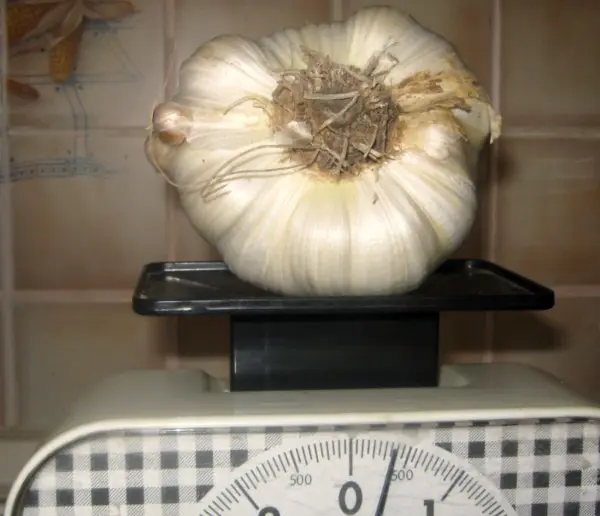
Rocambole combines the characteristics of onion and garlic, is a perennial plant. The stems reach a height of 1,5 meters, crowned with a spherical inflorescence with a large number of miniature flowers. Despite the obvious similarity with bulbs, this inflorescence does not produce seeds, because it is completely sterile. The bulb of the plant begins to divide into cloves only in the second year of cultivation. Under the conditions of cultivation, the bulb reaches 10 centimeters in diameter, weighs about 250 grams. Forms up to 15 onions, weighing 2-4 grams.
In food, you can eat both single-toothed, and bulbs divided into cloves, as well as plant leaves. The chemical composition of the culture contains essential oils, carbohydrates, vitamins, phytoncides, carotene, ascorbic acid.
Peculiarities of growing
Rocambole can be grown in two ways: by sowing single teeth or by using baby single teeth from the bottom of the main bulb. In the first year of cultivation, the bulb is easily confused with the onion bulb due to the fact that it is not divided into cloves. However, after sowing them in the second year, you will get the usual onion, divided into 5-7 cloves.
This variety prefers sunny places in the garden, without excessive stagnant water. Any soil is suitable, as long as it is fertile, contains many organic elements and is not overly acidic. Rocambole can be planted after legumes, cabbage, cucumbers, zucchini, eggplant.
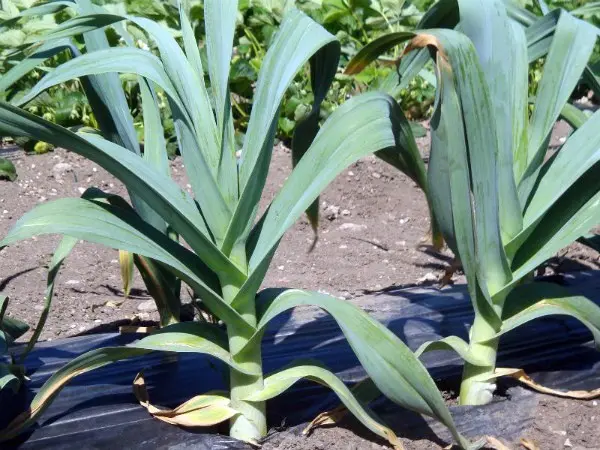
The beds are arranged from south to north so that the plants receive enough sunlight and heat throughout the day. A place for planting has been prepared since autumn: the soil is loosened, fertilized, dug up to a depth of at least 20 centimeters.
Before planting, the seed is calibrated in size, and then disinfected and hardened in a solution of potassium permanganate or ash liquor.
Landing
Mark the beds in the selected area. The distance between them should be at least 25 centimeters, and between the cloves of Rocambole at least 15 centimeters. The planting depth is 10 cm. After you have placed the cloves in the ground and covered the beds, you need to water them well and mulch with a 3-centimeter layer of humus, peat or straw. It is especially important to mulch the beds if you are planting Rocambole for the winter, as it cannot boast of high frost resistance.
Rocambole planting time for the winter is early October. In this case, you will need unsoaked cloves, which are planted at a distance of up to 15 centimeters, regardless of their size.
If your area has cold winters, the layer of mulch should be increased to 5 centimeters.
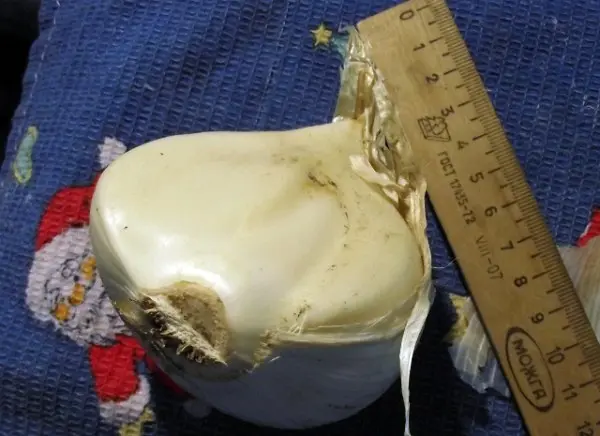
Care
As soon as you notice the first spring shoots of Rocambole, start loosening the soil between the beds and in rare cases (with caution) directly next to the plants themselves. Rocambole should be watered frequently, be sure to loosen the ground before watering, so that the plant receives as much moisture as possible.
Remove weeds in a timely manner, as Rocambole himself will not cope with this. If the plant looks weak, its leaves turn pale green, then it’s time to feed. Nitrogen fertilizers work well. In the middle of the growing season, phosphorus and potassium must be added to the soil. You can also water the beds with a yeast solution (dilute 10 grams of yeast in 10 liters of warm water, and then dilute the solution 1:10).
It is advisable to carry out preventive spraying with fungicides and insecticides in order to protect plants from damage by fungal microflora and insect pests.
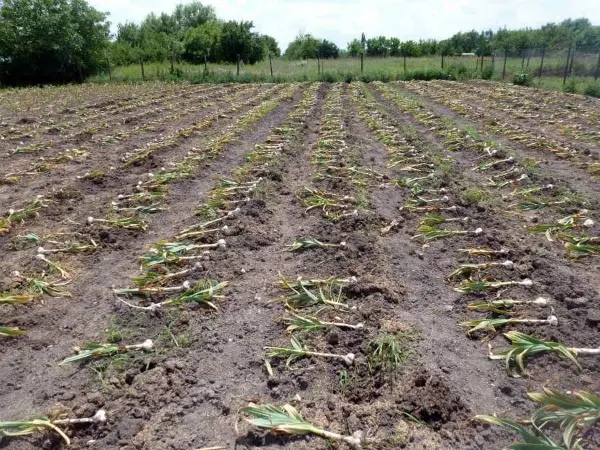
Cleaning and storage
The variety is harvested as soon as its leaves begin to turn yellow and dry.
Watch the plant carefully, as it is not recommended to keep Rocambole in the ground – the likelihood of infection with fungal spores increases. In addition, the scales on the bulbs become thinner and burst, so that the cloves fall apart and quickly begin to deteriorate.
Like ordinary garlic, the Egyptian onion is carefully pry with a pitchfork with flat teeth, laid out under a canopy, where it is cleaned from the ground. It is advisable not to leave the bulbs in the open sun so that they do not get burned – this will damage the sowing ability of the plant. 7-10 days are allotted for drying, guided by the color of the stem – as soon as it turns yellow, you can cut off both the stem and the roots, and then put them in storage.
Rocambole is stored in a dry, cool place, it is desirable that the air temperature does not exceed 7 degrees. Otherwise, you can use the same storage tricks as with garlic: sprinkle with salt, make powder, store in oil.
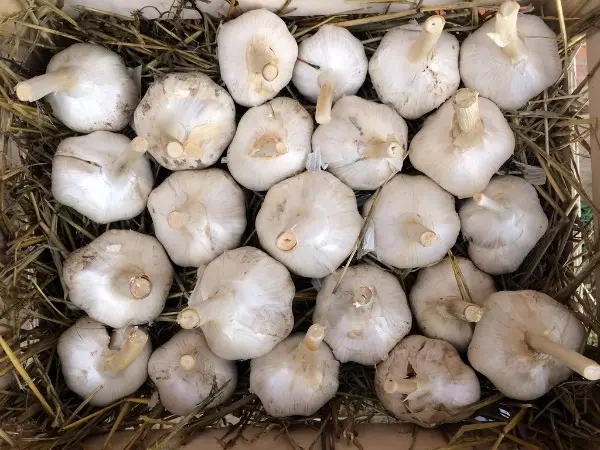
Pros and cons of the variety
Among the advantages of the Rocambole variety, it should be noted:
- high productivity;
- the large size of the bulbs and the weight of the cloves;
- unpretentiousness when growing;
- piquant taste;
- rich set of vitamins.
However, there are also disadvantages, which, although they do not spoil the pleasure of growing a variety, should be voiced:
- cultivation for two years;
- low frost resistance, as a result, the loss of part of the crop;
- vulnerability to fungal microflora;
- high probability of causing an allergic reaction in humans.
Video “About Rocambole”
In this video, a story about Rocambole garlic, its benefits, properties and applications.









